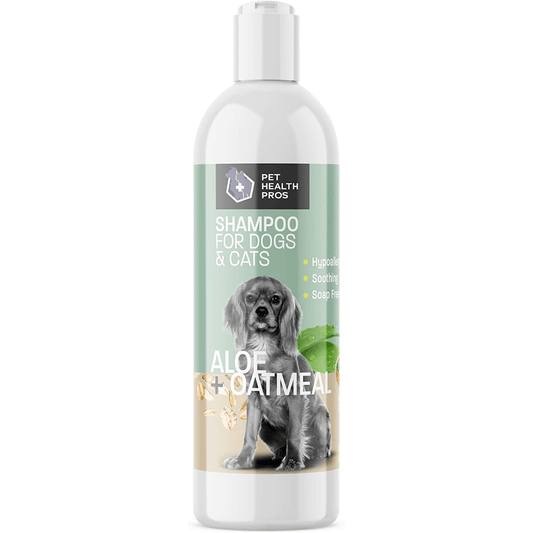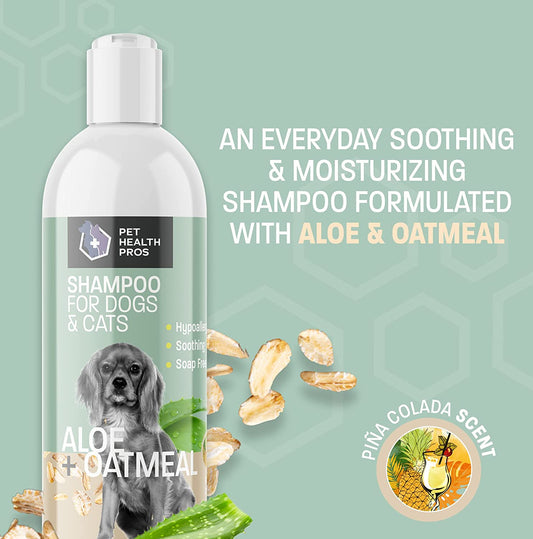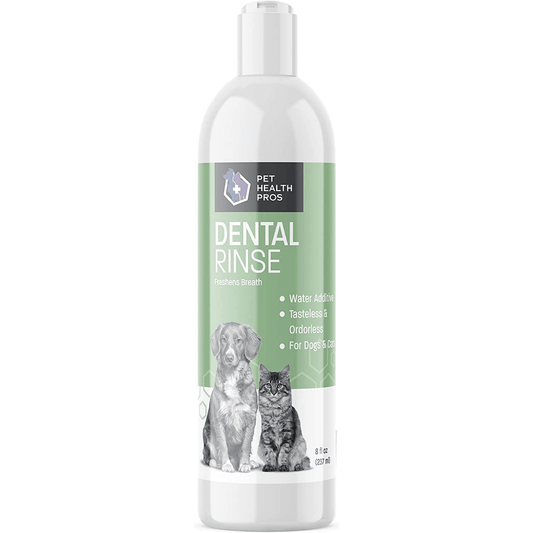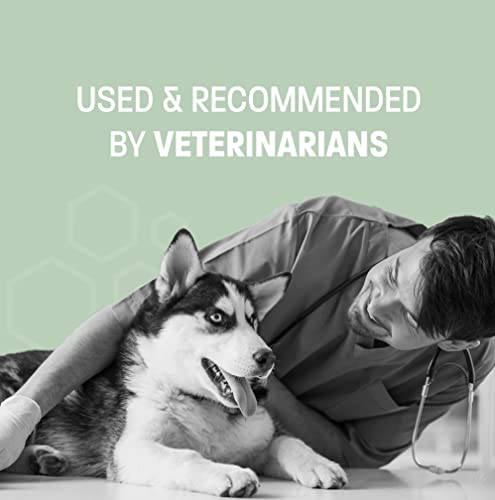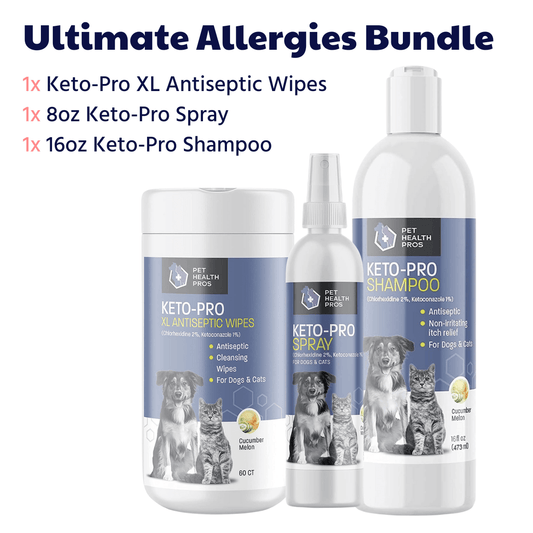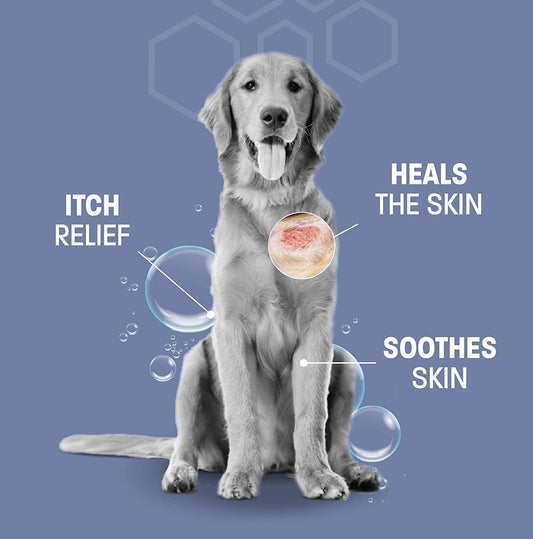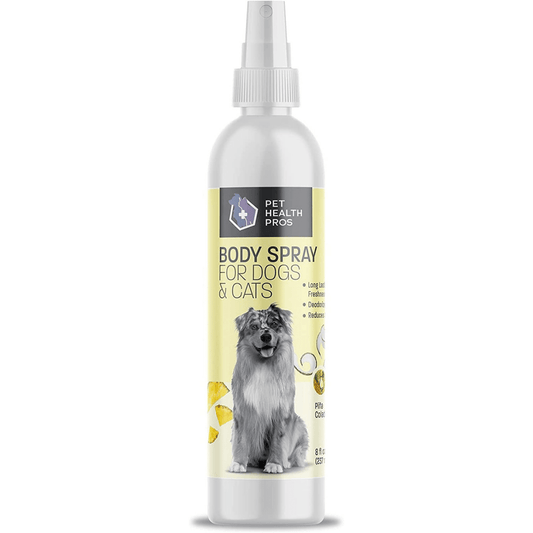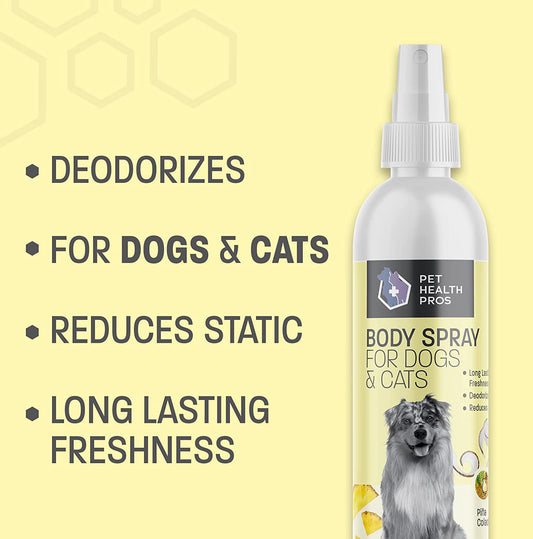Dealing with a dog's itchy paws can be a real headache. If your pup's been gnawing at their feet, it might be time to consider an antifungal cream. These creams can help tackle those pesky infections that make your dog's paws uncomfortable. In this guide, we'll walk you through everything you need to know about choosing the best antifungal cream for your furry friend's paws. Let's dive in!
Key Takeaways
- Fungal infections in dogs' paws are common and can cause discomfort.
- Choosing the right antifungal cream involves knowing key ingredients and consulting your vet.
- There are various antifungal creams available, including vet-approved and natural options.
- Proper application of the cream is crucial for effectiveness and safety.
- Preventive measures like regular paw checks and good hygiene can help avoid infections.
Understanding Fungal Infections in Dogs Paws
Common Causes of Fungal Infections
Fungal infections in a dog's paws can be caused by various factors. Moist environments are a breeding ground for fungi, so if your dog frequently walks on wet grass or swims often, they might be at risk. Yeast overgrowth is another common culprit, often triggered by allergies or a weakened immune system. Poor hygiene or existing skin conditions can also contribute to the development of these infections.
Symptoms to Watch For
When it comes to spotting a fungal infection, there are several symptoms to keep an eye out for. Your dog might start licking or chewing their paws more than usual. Redness, swelling, or a foul odor can also indicate an issue. In some cases, you might even notice hair loss or flaky skin around the paws. These signs suggest that your dog might be dealing with a dog paw yeast infection, which requires attention.
How Fungal Infections Affect Dogs
Fungal infections can significantly impact your dog's comfort and health. They can cause persistent itching and discomfort, leading to more severe skin damage if your dog continues to scratch or bite the affected area. If left untreated, these infections might also lead to secondary bacterial infections, making the situation worse. Ensuring proper treatment and care is crucial to prevent complications and maintain your dog's overall well-being.
Choosing the Right Antifungal Cream for Dogs Paws
Key Ingredients to Look For
When selecting an antifungal cream for your dog's paws, it's important to pay attention to the ingredients. Active compounds like ketoconazole are effective in treating fungal infections such as ringworm. Ketoconazole is a common ingredient that fights fungi by disrupting their cell membranes. Other beneficial ingredients include miconazole and clotrimazole, which are also known for their antifungal properties. Always check for moisturizing agents like aloe vera or vitamin E to soothe and heal the skin.
How to Read Product Labels
Reading product labels can be a bit tricky, but it's crucial for ensuring you pick the right product. Start by looking at the active ingredients and their concentrations. Then, check for any additional additives that might help with healing or soothing the skin. It's also wise to look for any warnings or side effects listed. Lastly, ensure the product is specifically designed for dogs, as some human antifungal creams can be harmful to pets.
Consulting Your Veterinarian
Before applying any antifungal cream, it’s always a good idea to have a chat with your vet. They can provide guidance on the best treatment options based on your dog's specific condition. Your veterinarian can also help rule out any underlying health issues that might be contributing to the infections. Plus, they can recommend products that are safe and effective, ensuring your furry friend gets the best care possible.
Choosing the right antifungal cream is more than just picking a popular brand; it's about understanding your dog's needs and ensuring their safety and comfort. Always prioritize their health by consulting professionals and reading labels carefully.
Top Recommended Antifungal Creams for Dogs Paws
Veterinarian-Approved Brands
When it comes to treating your dog's paw infections, veterinarian-approved brands are a safe bet. These brands have undergone rigorous testing and are often recommended by professionals. Some top choices include:
- Zymox Enzymatic Cream
- Vetnique Labs Dermabliss
- Curaseb Antifungal & Antibacterial Chlorhexidine Spray
These products are known for their effectiveness and safety, making them ideal for managing fungal infections.
Over-the-Counter Options
For those looking to purchase without a prescription, there are several over-the-counter options available. These creams can be found at most pet stores and are designed to be both effective and easy to use. Consider trying:
- Lotrimin AF
- Tinactin Antifungal Cream
- Pet MD Antiseptic and Antifungal Medicated Spray
These options are typically affordable and can be a quick solution for minor infections.
Natural and Organic Alternatives
If you prefer a more natural approach, there are creams made with organic ingredients that can help soothe your dog's paws. These alternatives often contain herbs and essential oils that have antifungal properties. Some popular natural options include:
- NaturVet Aller-911 Hot Spot Foam
- Burt’s Bees for Dogs Itch Soothing Spray
- Vet's Best Hot Spot Itch Relief Spray
While natural products can be gentler, always monitor your pet for any adverse reactions. Natural doesn't always mean safe for every pet.
Choosing the right antifungal cream depends on your dog's specific needs and the severity of the infection. Always consider consulting with your vet, especially if symptoms persist.
How to Apply Antifungal Cream to Your Dog's Paws
Step-by-Step Application Guide
Applying antifungal cream to your dog's paws can seem tricky, but with a few simple steps, you can do it effectively. First, make sure your dog's paws are clean and dry. Use a mild soap and water to gently wash the paws, then pat them dry with a soft towel. Next, apply a small amount of antifungal cream to the affected area. Use your fingers or a cotton swab to spread it evenly. Be gentle to avoid causing any discomfort to your furry friend. Finally, distract your dog for a few minutes to allow the cream to absorb properly.
Frequency of Application
The frequency of applying antifungal cream depends on the severity of the infection and the product instructions. Most creams recommend application 1-2 times daily. It's crucial to follow the product's guidelines and not to over-apply, as this can cause irritation.
Precautions and Safety Tips
- Always consult with your veterinarian before starting any treatment.
- Avoid letting your dog lick the cream, as ingestion can be harmful.
- Watch for any signs of allergic reaction, such as increased redness or swelling.
Keeping your dog's paws clean and dry is essential in managing fungal infections. Regular inspections can help catch any issues early, making treatment more effective.
For more information on managing yeast overgrowth in dog paws, consider exploring this topic further.
Preventing Fungal Infections in Dogs Paws
Regular Paw Inspections
Keeping an eye on your dog's paws is crucial. Regularly inspect them for any signs of redness, swelling, or unusual odors. These can be early indicators of a fungal infection. Make it a habit to check your dog's paws after walks, especially if they've been in wet or muddy areas.
Maintaining Paw Hygiene
Keeping your dog's paws clean is essential to prevent fungal infections. After outdoor activities, wash their paws with mild soap and water, ensuring you dry them thoroughly. Moisture is a breeding ground for fungi, so make sure no dampness lingers between their toes.
Diet and Nutrition Tips
A well-balanced diet can help boost your dog's immune system, making them less susceptible to infections. Include foods rich in omega-3 fatty acids and antioxidants. These nutrients support skin health and can be found in fish oils and certain fruits and vegetables.
Maintaining your dog's paw health isn't just about cleanliness—it's also about supporting their overall well-being through proper nutrition and regular check-ups.
For personalized pet care advice, consider using platforms like Pet Genius, which offer tailored health insights and recommendations for your furry friend.
When to Seek Professional Help for Your Dog's Paw Infections
Signs That Require Veterinary Attention
Sometimes, a dog's paw infection might need more than just home remedies. It's important to know when to call in the experts. If your dog's paw is swollen, oozing, or has a foul smell, it's time to see a vet. These symptoms could indicate a serious infection that needs professional treatment. Watch out for your dog limping or constantly licking their paw, as these are also signs that something might be wrong.
Possible Complications of Untreated Infections
Leaving a paw infection untreated can lead to bigger problems. An untreated infection can spread, causing pain and discomfort for your dog. In severe cases, it could even lead to systemic infections affecting other parts of the body. Chronic infections might also result in permanent damage to the paw's tissues, making it crucial to address the issue promptly.
Treatment Options from Professionals
When you visit the vet, they have several tools at their disposal to help your dog. They might prescribe antibiotics or antifungal medications to tackle the infection. In some cases, they may need to clean the wound or even perform minor surgery. Here's what you might expect:
- Antibiotics or antifungal medications: These help combat the infection directly.
- Wound cleaning: The vet may clean the area to remove dead tissue and promote healing.
- Surgical intervention: In severe cases, surgery might be necessary to remove infected tissue.
It's always better to be safe than sorry. If you're unsure about the severity of your dog's paw infection, consulting a veterinarian can provide peace of mind and ensure your furry friend's health is in good hands.
Understanding the Role of Diet in Preventing Fungal Infections
Nutritional Needs of Dogs
Feeding your dog the right diet is more than just about keeping them full. It's about giving them the nutrients they need to stay healthy and fight off infections, including those pesky fungal ones. Dogs need a balanced diet rich in proteins, fats, carbohydrates, vitamins, and minerals. Proteins are crucial for repairing tissues and maintaining a strong immune system. Fats provide energy, while carbohydrates are needed for overall vitality. A diet lacking in these essentials can make your dog more prone to infections.
Foods That Boost Immunity
Certain foods can give your dog's immune system a real boost. Incorporate foods like blueberries, which are high in antioxidants, and sweet potatoes, rich in beta-carotene. These can help fend off infections. Yogurt is another great option due to its probiotics, which support gut health and, in turn, enhance immunity. Including these in your dog's diet can be a game-changer.
Supplements to Consider
Sometimes, even a well-rounded diet might not be enough. That's where supplements come in. Omega-3 fatty acids, often found in fish oil, can be beneficial for reducing inflammation and supporting skin health. Vitamin E is another supplement that can help boost your dog's defenses against infections. Always consult with your vet before adding any supplements to ensure they're safe and effective for your furry friend.
Keeping your dog's diet in check is not just about preventing fungal infections. It's about ensuring they live a long, healthy, and happy life. Regular vet check-ups, combined with a nutritious diet, can make a significant difference in your dog's overall well-being.
For more insights on treating yeast infections in dog paws, it's important to consult a vet for the best advice tailored to your dog's needs.
Exploring Alternative Treatments for Fungal Infections
Home Remedies and Their Effectiveness
When it comes to treating fungal infections in your dog's paws, sometimes the simplest solutions are right at home. Home remedies can be a gentle way to alleviate symptoms and support healing. One popular option is the use of apple cider vinegar. A diluted solution can be used to rinse your dog's paws, helping to balance pH levels and inhibit fungal growth. Another household staple, coconut oil, is praised for its antifungal properties and can be applied directly to the affected area. Lastly, incorporating probiotics into your dog's diet can support their immune system and gut health, potentially reducing the recurrence of infections.
Aromatherapy and Essential Oils
Aromatherapy isn't just for humans; it can be beneficial for dogs too. Essential oils like lavender and tea tree oil have antifungal properties that might help in treating paw infections. However, it's crucial to use them with caution. Always dilute essential oils and consult with a vet before application, as some oils can be toxic to dogs if used improperly.
Acupuncture and Other Holistic Approaches
Holistic treatments such as acupuncture are gaining popularity among pet owners seeking natural remedies. Acupuncture can help boost the immune system, which is vital in battling infections. Other holistic methods include herbal supplements and dietary changes aimed at strengthening your dog's overall health. While these treatments can be beneficial, they should complement traditional veterinary care and not replace it.
While exploring alternative treatments, remember that maintaining proper hygiene and consulting with your vet are key to managing your dog's health effectively. Regular cleaning and inspection of your dog's paws can prevent infections from taking hold. Always seek professional advice if symptoms persist or worsen.
If your pet is struggling with a fungal infection, consider exploring alternative treatments that can help. These options may provide relief and improve your pet's health. For more information and to find the best products for your furry friend, visit our website today!
Wrapping It Up
Finding the right antifungal cream for your dog's paws can feel like a daunting task, but it doesn't have to be. With a bit of research and understanding of your dog's specific needs, you can make an informed choice. Remember, every dog is different, so what works for one might not work for another. It's always a good idea to consult with your vet before trying a new product. They can provide guidance tailored to your furry friend's health. In the end, the goal is to keep those paws healthy and happy, so your dog can enjoy their walks and playtime without discomfort. Thanks for sticking with us through this guide, and here's to many more wagging tails and joyful adventures!
Frequently Asked Questions
What causes fungal infections in a dog's paws?
Fungi love warm, damp places, making your dog's paws a perfect spot. Walking in wet areas, allergies, or a weak immune system can lead to these infections.
How can I tell if my dog has a fungal infection on its paws?
Look for symptoms like redness, itching, a bad smell, or your dog licking its paws a lot. These signs mean it's time to check with a vet.
What ingredients should I look for in an antifungal cream?
Choose creams with ingredients like miconazole or clotrimazole. They help fight off the fungus effectively.
Can I use human antifungal creams on my dog's paws?
It's best to use creams made for dogs. Human creams might have ingredients that aren't safe for your furry friend.
How often should I apply antifungal cream to my dog's paws?
Usually, you should apply the cream twice a day. But always follow the instructions on the product or ask your vet.
When should I take my dog to the vet for a paw infection?
If the infection doesn't get better in a week or gets worse, see a vet. Also, if your dog is in pain or the paw looks very bad, it's time for a vet visit.

